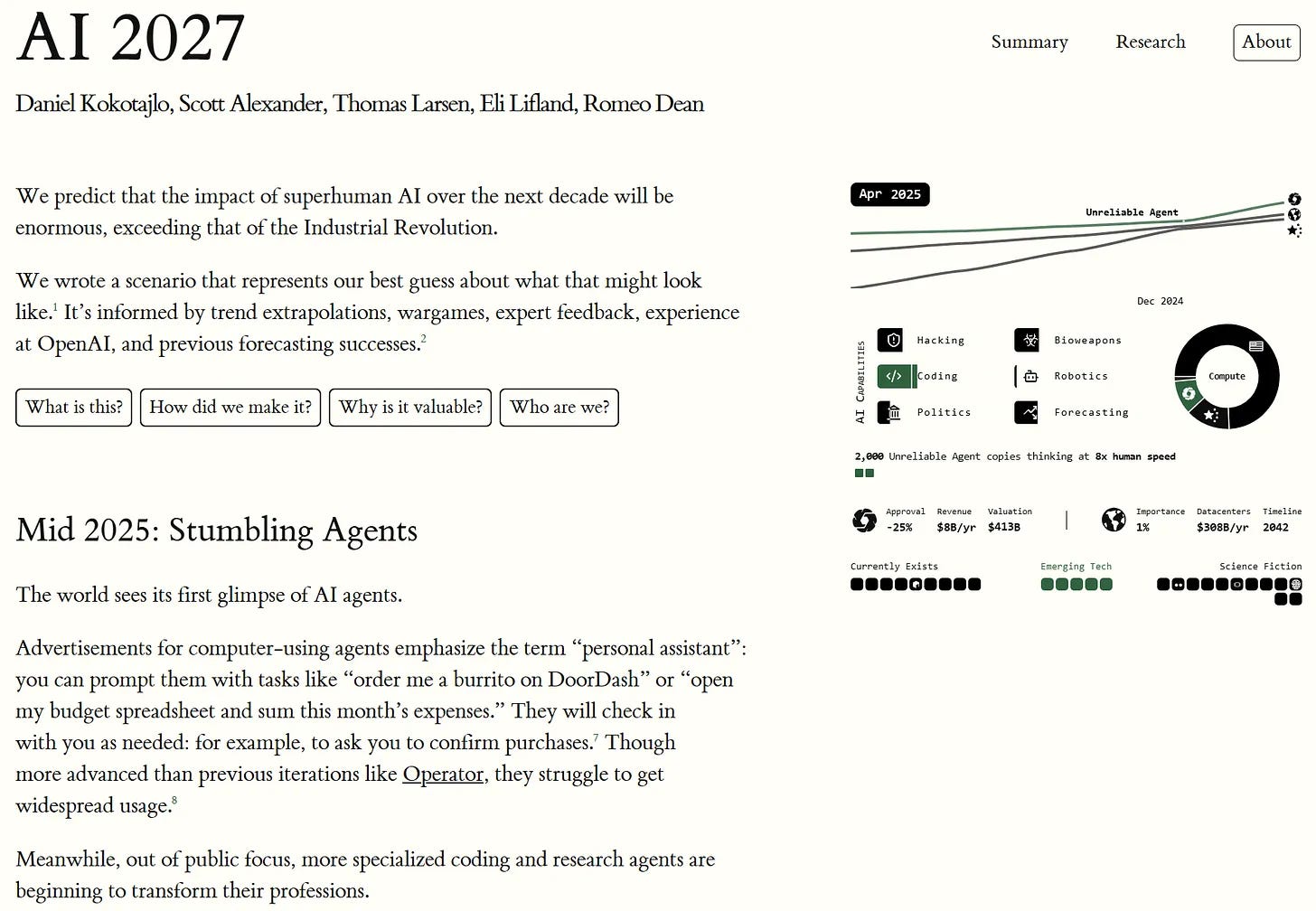Design magic moats win... or are all tools commoditized?
Also: humans rendered useless by 2027, and the impact of tariffs on the AI arms race
I remember hearing Instagram co-founder Kevin Systrom talk about a tiny Instagram trick that made the whole product feel magical. Whenever you wanted to publish a photo and started typing your caption, the app would, in fact, begin uploading the image before you hit “Post.”
So by the time you were done typing, the photo was already halfway up the pipe. Tap post, and boom--it felt instant. That blue bar would race across the screen and be a moment of instant gratification.
That is the kind of design intelligence that users deeply fall in love with.
The runway success of Cursor, the AI IDE that crossed $200M in revenue in 16 months and soared to a $2.5B valuation, can be traced, in part, to a similar kind of product intuition that makes it feel like magic. Its highly-anticipated competitor, Devin, which launched this week to the public — underwhelmed with its user experience. Having used Cursor for several months, Devin felt frustrating to set up and use, and chatting with Devin didn’t feel as “fun”.
The output of its code quality, however, could very well have surpassed Cursor. The latter struggled through my product spec prompt (a web app that integrated airtable + analytics), which Devin built out pretty much in one or two go-es.
“I don 't think devs are that loyal to any tooling... which makes me think that vibe coding has commoditized” - a friend
It boils down to a question that has been swarming in VC and founder conversations: do these hyper-fast growing tools have a sustained moat or network effects? Or are they all commoditized?
It’s hard to say, for sure. I’ve written about about how product is distribution in AI, and that Cursor’s integration of MCP brought a flood of attention to the protocol which was initially published (and pretty much ignored) in Nov 2024.
Now if someone like Google (whose Gemini 2.5 pro is performing impressively and who has the pockets deep enough) just gived free access to an AI coding agent for a few years — they could absolutely dominate the market.
A similar cambrian explosion is happening in the Agent Tooling space. This week alone, we had General Agents, Yutori, Amazon’s Nova, Genspark’s Superagent, and Lindy’s Agent Swarms all launched or announced.
Not to spook you, but these were all oracled by the team behind AI 2027, a new non-profit organization to forecast the future of AI. They also predict:
Early 2026: We start seeing payoffs from using AI to speed up AI research
Mid 2026: China wakes up to threat of an American AGI
By 2027, we have self-improving AI and humans are rendered useless.
… let that sink in…
Maybe this would make you feel better…
The one spanner in the works against this superintelligence flywheel…could somehow be Trump’s tariffs?
While the US designs over 50% of the world’s semiconductors, only 12% is manufactured on American soil. The new 32% tariffs placed on Taiwan on April 2 means that it’s now much more expensive for US AI companies to acquire chips.
TSMC, the world’s largest chip manufacturer, is making headway on a partnership with US-based Intel to operate its chip-making facilities in the US.
But, but — if the U.S. ultimately cannot produce advanced chips domestically, due to delays, production issues, cost overruns, or political breakdown, Trump’s tariffs become a self-inflicted chokehold in the AI arms race.
Interesting Threads I Came Across This Week
The Art of Lazy prompting (Andrew Ng)
The Gili Ra’anan model: Questions emerging from Cyberstarts' remarkable success (CTech)
Apple-MCP is unbelievably good (@DhravyaShah)
We Need to Rewild The Internet (Noema Magazine)
P.s. I’m trying out this new letter format. Let me know what you think!






